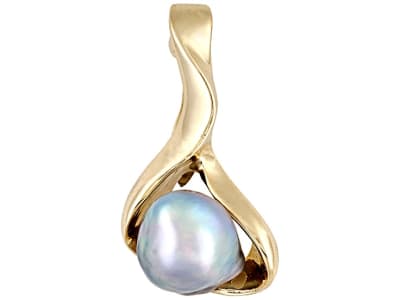Cortez pearls come from the Gulf of California also known as the “Sea of Cortez”. The pearls are harvested from the Panamic Black-Lipped Oyster (Pinctada mazatlanica) and the Rainbow-Lipped mollusk (Pteria sterna). Only about 4,000 pearls harvested each year meet the industry’s quality standards to be sold on the gem market. The pearls have a beautiful luster due to their exceptional nacre thickness. The pearls can come in silver, gray, gold, green, blue, violet, purple, and black with pink, violet, blue and green overtones. The pearls average 6.5 to 8.5mm but some 14mm pearls are known. Cortez pearls are a biogenic gem material which means it was derived from a living organism.
General Information
Cortez Pearl Colors
-
 Black
Black -
 Blue
Blue -
 Brown
Brown -
 Gray
Gray -
 Green
Green -
 Purple
Purple -
 Yellow
Yellow
Alternate Names
Rainbow Pearls
Countries of Origin
Mexico
History
The evidence for pearl fishing in Mexico dates to 650 to 800 A.D where pearls were found in Tomb 7 at the Monté Albán archaeological site. The Spanish account of the Alvarado Massacre which took place on May 22, 1520, describes the Aztec leaders adorning themselves with pearls at the celebration of the Feast of Toxcatl. In 1535 Hernan Cortez traveled to Baja California in search of the “Sea of Pearls”. The Gulf was initially named the Sea of Cortez in his honor. Natural pearl farming in Mexico has been plagued by overfishing. To save the pearl industry the first breeding station was established in 1903. The Mexican cultured pearl industry has been hindered by political upheavals and a disease outbreak that devastated the mollusk population that led to a fishing ban in 1940. In 1969 the Mexican Government began establishing cultivation research stations to revive the cultivated pearl industry.
Care
Avoid cosmetics, perfumes, hairsprays, heat and household chemicals.
